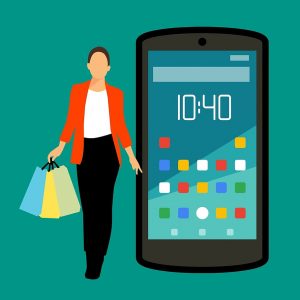In the future, it is likely that the physical store kelab 711 will disappear permanently. The frenetic advances in technology and online shopping will emerge as a means of eye-washing. What are future shopping trends?
Dream – One of the favorite activities among women, namely shopping, is expected to change quickly. One time, shopping activities will not be done at the store but simply by removing the smartphone and tablet from the bag.
However, eye-washing activities by going in and out of the store will not be completely extinct. It’s just that, this ancient way of shopping will appear in a different way.
 In the future, it is likely that the physical store will disappear permanently. The frenetic advances in technology and online shopping, making physical shops compete to offer more facilities and services when selling their products.
In the future, it is likely that the physical store will disappear permanently. The frenetic advances in technology and online shopping, making physical shops compete to offer more facilities and services when selling their products.
Some of the technologies envisioned by industry observers are holograms in the locker room that will allow buyers to try on clothes without undressing. Homes in the future will also be equipped with smart technology that will order lights automatically.
It is also possible if one-day prospective buyers can print a full version of coffee mugs and other products, which are ordered using 3-D technology in stores.
All-round Personal Services
There are currently many stores that provide self-service facilities. A store in Seattle named Hointer displays clothes not in stacks or on shelves like other clothing stores but hung and displayed one by one like a gallery.
The buyer only uses a smartphone and tags the code displayed on the item. Then the buyer can choose the color and size through his cellphone. The technology at the store then tracks the item the buyer selected earlier, and by the time the buyer is ready to try it, the item is already in the locker room.
If the buyer doesn’t like the item, all he has to do is move the item that automatically deletes the item from the buyer’s online shopping basket.
“They ended up buying more, they were happy and interested in trying again,” he said.
Coupons Match Your Own Taste
Some stores such as Tesco in the UK and pharmacy Duane Reade are testing beacons, Bluetooth-enabled devices that can communicate directly with cell phones to offer discounts, point to the desired product, or make it possible to pay remotely.
For example, when walking to a drugstore where someone usually buys face cream, the beacon will recognize the buyer’s smartphone. He then links it to the history of past purchases and sends a text or email with a coupon for the cream.
The problem is, shoppers don’t want to be profiled by online stores that don’t have a physical store because they are afraid of becoming victims of frequent fraud.
3-D Printing Service
In the past ten years, printing 3-D could disrupt the retail market, said Deloitte Lobaugh predicts. Take a simple example like a coffee cup. Instead of making it in China, transporting, and distributing it to retail stores, one can download the code for the coffee mug and print it 3-D at a retail outlet or in one’s own home.
That is a dramatic change in the current retail structure,” Lobaugh said. And now, most 3-D printing is still in the form of plastic. But Lobaugh said there were tests at the MIT Media Lab and elsewhere with other materials, including fabrics. “The big question is when,” he said. Now some shops offer 3-D printing services, but they are very limited. He predicts that 3-D printing will expand in the next 10 to 20 years.
Any House Can Shop Alone
The head of innovation for eBay, Steve Yankovich, predicts that one day people will not bother when buying household equipment. One day online connected homes use previous customer history and real-time data to monitor when a light bulb breaks.
The system in the house will order new ones automatically. Or the washing machine will order more detergent when he ‘feels’ lacking.
Hologram
eBay recently bought PhiSix, a company that works to create 3-D human-sized clothing models that can be used in dressing rooms. The hologram can then be used to try different colors and styles of clothing. Prospective buyers can see 30 or 40 items of clothing realistically without physically trying it.
Some companies have tested it. The British digital agency Engage created the Virtual Style Pod that scans shoppers and creates a virtual world where luxury clothing from brands such as Alexander McQueen and DKNY are projected. The pod was brought in at shopping centers in Dubai and Abu Dhabi in the United Arab Emirates.
